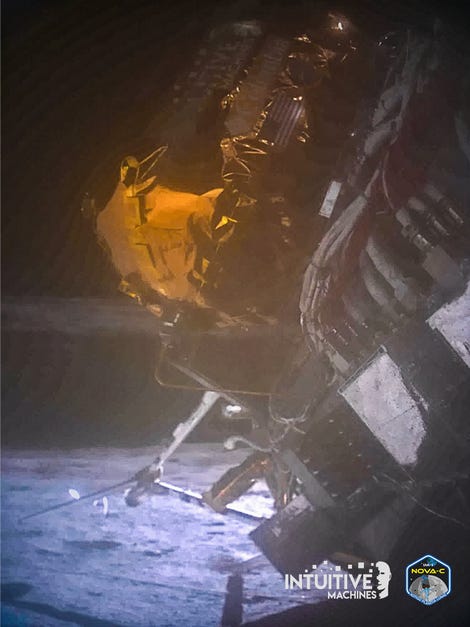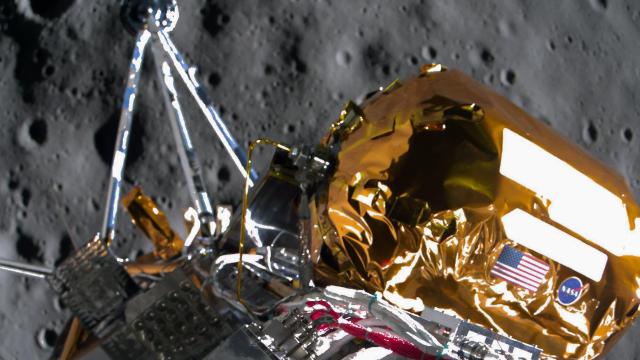After a nail-biting touchdown on the lunar surface that left Odysseus bent over on its side, the lander is ready for its nap. Intuitive Machines is getting ready to power down its lunar lander, with hopes that Odie may wake up once the Sun illuminates its functioning solar array again.
The Houston-based company held a press conference on Wednesday to give an update on its IM-1 mission, which landed on the Moon on February 22. The Odysseus lander had some trouble making it to the lunar surface due to an issue with its navigation system and ended up slightly tipped over on its side. In its less than ideal position, Odysseus can only receive sunlight on its horizontal solar panel.

“We are projecting a time where the solar power generation will not allow Odie to continue sending down telemetry,” Intuitive Machines CEO Steve Altemus said during the press conference. “We will put Odie to sleep and expect to wake him up in the next two or three weeks.”
At the time of the press conference, Altemus anticipated that Odysseus had around five hours left before it powers down. The lander, however, is not designed to survive through the freezing temperatures of night time on the Moon, which can drop down to -298 degrees Fahrenheit (-183 degrees Celsius). “We’re confident that when the Sun comes back up over Odysseus, that the solar arrays will energize and they’ll send power,” Tim Crain, chief technology officer and co-founder of Intuitive Machines, said during the press conference. “The real question is, are the batteries there to receive that power and pass it on? And then will the electronics within our computer and radio have withstood that deep cold and not basically [crack] under the thermal stress?”
Although the lander is powering up from a solar panel currently in the Sun’s path, Odysseus will remain illuminated slightly longer than the panel. As the Sun comes back in the east, the solar panel will start to receive light once again.
Earlier this week, another awkwardly placed lunar lander surprisingly revived itself after surviving a night on the Moon. Japan’s SLIM lander sprung back to life on Sunday, reestablishing communication with ground control while laying face down on the Moon’s dusty surface.
If Odysseus does wake up, it would be a cool little treat for the mission and a chance to collect additional data, although the lander has already fulfilled its main purpose of a soft landing on the Moon and delivering payloads to the surface. “The whole idea of this mission was not to live as long as you could on the surface,” Altemus said. “This mission was intended as a scout and a pilot mission to go land on the surface, collect the data, and then the cold of night was going to take the lander, where it would sit there quietly for the rest of the time.”
Odysseus has already made history with its imperfect touchdown, becoming the first commercial lander to touchdown on the Moon. The company is still betting on its spacecraft, which has defied all odds up until now.
“If we would have had the laser rangefinders, we would’ve nailed the landing,” Crain said, reflecting on Odysseus’ touchdown. “We would’ve absolutely hit the bull’s eye.”
